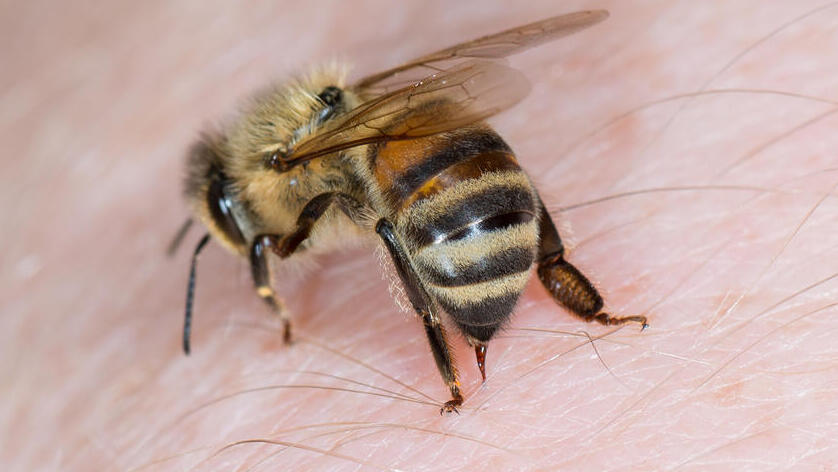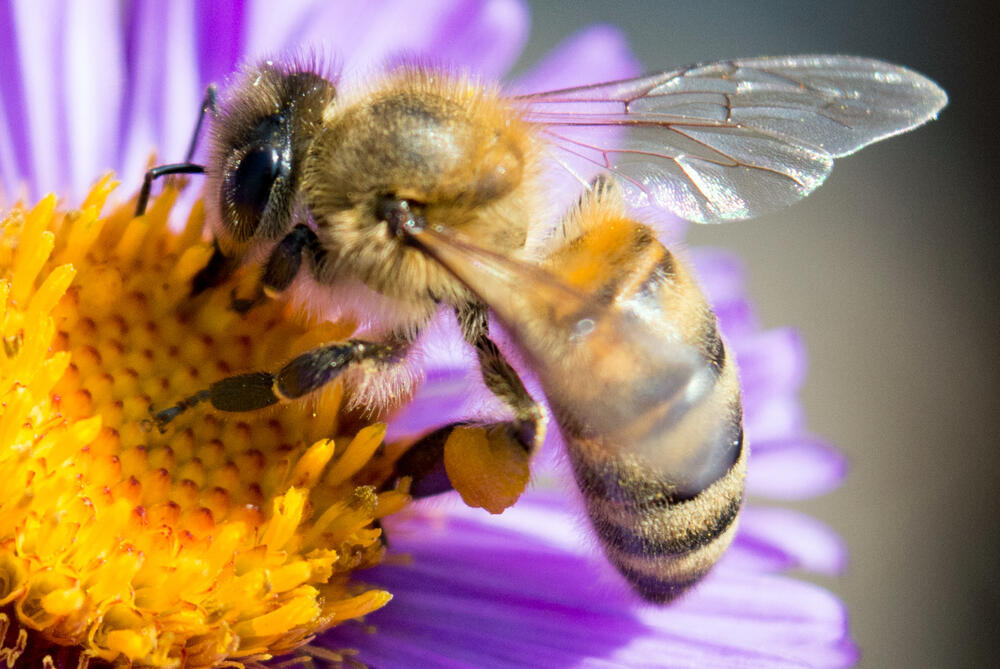Getting your Trinity Audio player ready...
Bee stings are quite common in Israel, especially during spring and summer when bee activity is at its peak. Those at high risk of getting stung are usually agricultural workers and children playing in gardens with abundant flowers.
More stories:
What happens during a bee sting?
The bee's stinger is located at the tip of its abdomen. During the sting, two venom sacs mix, creating a component that enters the body through the needle. The bee's stinger is torn from its body during the sting and remains lodged in the stung area.
At the time of the stinging, some of the bee's internal organs are also torn, causing the bee to die within a few seconds. The scent of the venom released by the bee attracts other bees to the area, who also continue to sting.
What happens in the body after a sting?
The venom causes redness, pain, swelling and itching at the sting site. In allergic individuals, severe reactions such as shortness of breath, headaches, low blood pressure and loss of consciousness may occur.
When can a sting be dangerous?
If the reaction to the sting isn’t severe, washing the wound with soap and water, gently removing the stinger and applying a cold compress to the area may be sufficient. Topical ointments such as Fenistil or aloe vera can also provide relief.
However, in the case of a severe allergic reaction resulting in loss of consciousness, emergency resuscitation needs to be performed. People known to be allergic to bee stings, including those working in the vicinity of bees, should carry an epinephrine auto-injector for personal use.
The injection contains adrenaline, which causes blood vessel contraction, raises blood pressure and relaxes respiratory muscles. This allows time for the individual to arrive at the hospital for proper treatment. The injection is life-saving and must be performed immediately, as the situation can deteriorate leading to suffocation and death.
"It’s important to note that an individual can be diagnosed to know what venom they’re allergic to,” Dr. Cyril Yoffe, a clinical allergist and immunologist at Schneider Medical Center For Children, explained.
“Life-saving treatment exists for patients who are allergic to bee venom. The process involves immunotherapy specific to bee venom, in which the immune system is retrained not to react to the venom,” he added.
“Seeking allergy diagnosis and treatment is essential. Sometimes a reaction to bee venom can be the first sign of a disease affecting cells responsible for allergies in the human body, which is another reason to perform an accurate diagnosis," he said.



